Ed Scarpo's Blog, page 38
March 4, 2015
VH1 Mob Wives Series Finale: Will There Be Blood?
Tonight is VH1's Mob Wives series finale.
We finally got a chance to watch last week's episode and came to a realization hypothesis: Renee's baptism plays out, then we cut to a restaurant scene where Natalie DiDonato is providing Drita with proof that supposedly will finish off Natalie Guercio.
Kind of like The Godfather's infamous baptism scene in which Michael Corleone is taking part in the ceremony in a Catholic Church, no? The scene is inter-cut with scenes of the enemies of the Corleone family getting whacked one by one, and is probably one of the most famous scenes in film history (if not history, period.)
This has got to be intentional; how many of you picked up on The Godfather reference?
We were correct in one regard, it seems (unless they pull another rabbit out of the hat).
We've said from the beginning the whole point of this season was to bury Natalie Guercio because she made Renee Graziano look bad last season. As we wrote:
NOTE: We believe Renee did poorly in show testing and that is probably why she's been promoting herself nonstop since the end of season four (it also certainly helps if your sister is, like, the show creator). The current season will be devoted to repairing Renee's image as a raving drug addicted psychotic.... In fact they appear to be loading the cast with anyone they can get their hands on as long as they kiss Renee's ass... (and apparently, we add now, they got Nat D. to play Renee's Luca Brasi.... yes, we know Brasi was killed before he could avenge his Don, but hey we're taking some liberties here, okay?)
 Luca Brasi....We then highlighted a story on a website that sounded too correctly prescient about what was going to happen this year as well, regarding Natalie Guercio.
Luca Brasi....We then highlighted a story on a website that sounded too correctly prescient about what was going to happen this year as well, regarding Natalie Guercio.
Not "it looks like" or "it appears that".... Rather, the simple declarative statement that Guercio is going to learn this lesson the hard way.
We'll find out if we were right about this tonight, but judging by the video, we were on the money.... We still, however, hope the show proves us wrong about this because we love the smokin' Nat Guercio....

So.... how many of you picked up on The Godfather reference?
Published on March 04, 2015 11:30
March 3, 2015
Onetime "Shooter and Gentleman" Gene Gotti Embittered by Prison
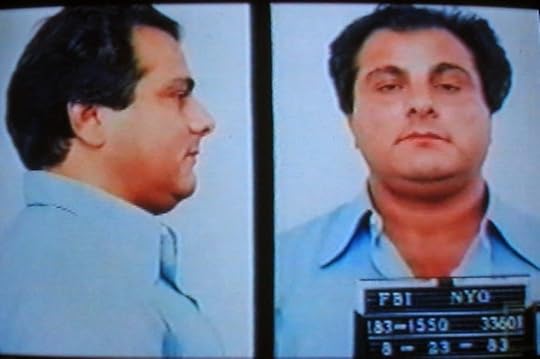 courtesy of Wikimedia Commons
courtesy of Wikimedia Commons REVISED: "I was part of the 'Cowboy Case'," our source said. "We kidnapped people for ransom and murdered some of them. That was all mob connected, with the Gambino crime family."
The "cowboy crew" was notorious in 1991, 1992. They were featured on America's Most Wanted, newspapers ran stories about them. (We are posting this as part of a larger story we are writing about Gene Gotti; we are also, yes, still working on the Cowboy Crew story.)
Our source was born into the life. "When I was 16 years old I carried a .357 Magnum and worked as a bouncer at a mob nightclub.
"I'm 53 now. I just completed a sentence in another racketeering extortion case."
Our source has served some serious prison time, at places like McKean and Allenwood penitentiaries, in Pennsylvania.
"I was around all these guys," he said. "I walked the track with Gene Gotti every day."
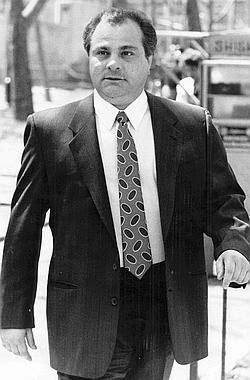
Gene became a made member of the Gambino crime family in 1976, working with brother John who ran the South Ozone Park crew. By the early 1980s, Gene operated a huge illegal drug operation along with Gambino mobsters John Carneglia and Angelo Ruggiero, under the direction of then capo John Gotti. Others were involved as well.
In 1985, John Gotti arranged Castellano's assassination and took over the crime family. Soon after, John named Gene official capo of the South Ozone Park crew.
Gene was involved in several mob hits -- and was given one of the highest compliments one gangster can give another. While on the street, Gene was a "shooter and a gentleman."
Gene also was a successful gambler; unlike his brother who was widely known for being a degenerate gambler who never won.
Gene in fact reportedly loved telling John how much he'd won, say, at the racetrack. John Gotti routinely gambled away hundreds of thousands of dollars in one weekend -- betting on anything from football to the horses to basketball to two cockroaches running up the wall (depending on who you ask).
On May 24, 1989, after two mistrials, Gene was convicted of running a multimillion-dollar heroin smuggling ring. Two jurors were dismissed from the third trial, including an alternate.
On July 8, 1989, Gene was sentenced to 50 years in federal prison. After his sentencing, the Gambino family demoted Gene from capo to soldier because he was in prison. His projected release date is September 14, 2018, when he will be 72 years old.
Ironically, Gene Gotti was given an opportunity to accept a plea deal that would've permitted a prison sentence of around 10 to 15 years; meaning he would've been free to celebrate the Millennium. However, John Gotti "adhering to the mob dictum that forbids admitting guilt urged them to go to trial. Gotti, then the newly coronated king of the Gambino family, then tried to fix the jury, according to prosecutors. But things did not go according to plan...."
A friend of our source's, a Luchese member, was Gene Gotti's cellmate at McKean.The Luchese member also was close with Louis DiBono, a member of the Gambino crime family murdered in October 1990. Shot three times in the head, his body was found in a car in an underground parking garage at the World Trade Center. John Gotti Senior was convicted of ordering the hit.
Our source noted that in addition to DiBono, the Luchese button man also was "tight with Gene."
"Gene would badmouth everyone," our source said.
He walked with Gene every morning -- and once he was off for the rest of his day, Gene warned his cellmate (not knowing his cellmate was friends with our source): "Patty, you better be careful, he was kidnapping guys."
"Patty put him in his place – he told Gene, 'It was one of our kind who gave him the orders.'"
The source noted that John Alite saved his life in Allenwood.
"He [Alite] was there before me. There were a lot of guys from Philly mob there, and guys from different families. But John was the man on the compound.
Our source soon encountered a problem with members of the Philadelphia mob family in Allenwood at the time. He didn't want to get involved in some kind of ongoing dispute between the Philly mob guys and some Muslims. The feud was supposedly caused by a loudmouth Philly mobster who was jumped.
"I didn’t get involved because I didn’t like the situation," the source explained. "The guys from Phillly weren’t too happy with me."
So what did they do? They put a hit on him.
"John Alite saved my ass," he told us. "He said, 'Leave this fucking guy alone, he’s in the right.'"
The Philly guys also were abusing some older Luchese gangsters, men in their seventies, the source said.
The Luchese members had started to lord it over the Philadelphia gangsters, who finally got tired of it. Johnny "Gongs" Casasanto was among the first to stand up to the older Luchese gangsters.
"They're old, they're doing 30-year sentences and they were getting abused by these kids from Philadelphia."
It wasn't only our source who received Alite's assistance in prison.
"Alite stuck up for Joe Gambino at McKean because Gene was abusing him. You don’t run in that life and not know every move on the compound. I saw a lot of it. Gene was abusing his own fucking guys – the Gambino brothers. He wants everyone to kiss his ass because of his last name.
"Backstabbing treacherous fucking people... The loyalty don’t run deep with them."
Published on March 03, 2015 08:30
March 2, 2015
Perspective on Mob's Marijuana Business
 Arthur Mondella
Arthur Mondella
We're jealous! Jealous that we didn't think of this first -- to incorporate the feedback of a Mafia expert to give the story of the suicided Cherry King more juice...
Also, all you hear about is the mob selling heroin and cocaine, but they also sold a lot of dope (meaning weed, grass, smoke, pot, etc.) and this article quotes an ex-gangster to provide insight... One of our longtime readers commented about the prices, saying: "His prices are right for '90s prices," as our "Larry Jefe" notes in this story's Featured Comment below. He adds: "Since the late 90's most MJ in NYC was shipped from Vancouver thru Monteal and later in the 00's California, with an exception for the best quality indoor which NYC has always been known for growing."
From the New York Daily News: “Cherry King” Arthur Mondella was likely making millions of dollars from his secret pot-growing farm, according to an expert in the city’s illicit ganja trade — former pot farmer and ex-Gambino gangster John Alite.
Cops say Mondella grew at least 100 plants at a time in the basement of the Dell’s Maraschino Cherries factory in Red Hook — which could have earned him $10 million a year, according to Alite.
Alite said he grew his own “wacky tobacky” in three- month cycles, with about 100 4-foot plants yielding approximately three pounds of weed each. The pot was sold for a minimum of $3,000 a pound, he said.
“So that’s $1.2 million every three months,” he said. “If it’s higher quality we sold it for $6,500 a pound. So now you’re at about $2.5 million every three months.”
Mondella’s operation, Alite told The Post, was truly a growth business.
“You’re anywhere from $5 to $10 million a year in profit, if it’s higher quality like we had,” Alite said.
The Gambinos had for years been trucking in 10,000 pounds of pot at a time from Mexico. But in the mid-’90s, they started farming their own — first in a basement in Woodhaven, Queens, and later on an 18-acre property upstate, according to Alite.
“It made us millions of dollars a year, without a doubt,” said Alite, who now consults on crime for TV and movies at http://www.johnalite.com.
Mondella, 57, fatally shot himself in the head in a bathroom of his factory on Tuesdayas investigators opened a secret door leading to his huge, 50-by-50-foot basement grow house.
His funeral was Saturday at Sacred Hearts of Jesus and Mary-St. Stephen Roman Catholic Church in Carroll Gardens.
Loudspeakers played Frank Sinatra’s “My Way” as his casket was carried from the church. He was buried at Green-Wood Cemetery.
Published on March 02, 2015 22:28
A Lag in Blog Content....
Due to a death I am even more behind schedule than I was in the first place.
I am still working on the "Cowboy Crew" story. Also I spoke to Stevie Newell and will post a story from that interview soon.
Please be patient with me. I am seeing my traffic rise to higher-than-ever-before levels and believe me, I can't wait until I start knocking out stories.

I am still working on the "Cowboy Crew" story. Also I spoke to Stevie Newell and will post a story from that interview soon.
Please be patient with me. I am seeing my traffic rise to higher-than-ever-before levels and believe me, I can't wait until I start knocking out stories.
Published on March 02, 2015 14:36
February 28, 2015
What Does Today’s Mob Look Like?

UPDATED, REVISED SLIGHTLY: I talk to a lot of guys who were in the mob, did their time and decided enough was enough.... They came home and went straight. Considering the backgrounds of some of these guys, it really makes you wonder about the state of the current mob....[The story I link to follows my preamble.]
One of these guys (I am still working on the story, which I'll post by tomorrow, it's taking longer than I anticipated) reveals the goings on of one of the most pitiless Mafia-affiliated crews you've never heard of. These guys wore bulletproof vests, real police shields, carried AK47s and blasted people in the street, sometimes in broad daylight.
When they went to hit someone it was like a military operation. They'd use five cars, blocking off a street at both ends.
When one of them was "sent for" he brought his gear and guys with him into the social club. He'd show up with six guys, all wearing bulletproof vests, guns visibly tucked into the front of their pants. A bunch of guys waited in a van parked in front of the social club. They had the AK47s and knew if their guys didn't come out, they were going in blasting.
It pissed the bosses off, of course. You don't walk into a social club locked and loaded. But as my source said: "This is how I stayed alive. If they had problems with how I came in, it meant they had bad intentions to begin with."
The crew was in the business of kidnapping drug dealers for ransom. Anyone who got in their way was blasted.
What they didn't realize until much later into the operation was that they had bumped up against a longtime arrangement between drug dealers and the Gambino crime family, one that was likely put in place by Albert Anastasia or Carlo Gambino sometime in the 1950s. This particular operation was never exposed publicly for what it truly was. How these guys are out today has to do with guys refusing to testify or press charges.
John Gotti was boss at the time, and he was in the position of trying to stop this crew because they were torturing and killing guys who were paying him huge money. Gotti tried to reel them in, when he realized he couldn't, he put contracts on all of them.
My source also told me about another Gotti, one he spent a lot of time with in prison.
Now, I have to say that he only contacted me because of my coverage of John Alite. "John Alite was a serious, serious, serious fucking dude," he said. So here is the great secret: John Alite knows what a certain family is saying about him to discredit him. In an effort to prove his story to this writer and his audience, he is providing me with access to serious mob guys. These are guys who never in a million years would speak to me.
Bottom line, we try to write stories about the mob that have never been told before. John Alite understands this and is going out of his way -- making a large personal effort -- to plug us in with heavy hitters from the mob.
We want to thank John, right here for his efforts. [By the way, Gotti's Rules: The Story of John Alite, Junior Gotti, and the Demise of the American Mafia is now available in the UK. Shadow of my Father is available in paperback now.]
The Death of the Mafia? » Harvard Political Review: "In mid-1950s, the Italian-American criminal organization known as Cosa Nostra was enjoying the peak of its political influence and economic success. At the time, many questioned the organization’s presence. J. Edgar Hoover completely denied its existence for years. And unfortunately for the criminals describing themselves as “businessmen,” their reign atop the criminal underworld was swiftly coming to a close. Why did the power of Cosa Nostra begin to decline? Is this decline indicative of the death of the mob? And what does today’s mob look like? "
The factors that led to this near cessation of overwhelming power are numerous, but two stand out as the most influential. The first is the death of omertà, the code of silence, and the resulting convictions. The second factor involved other criminal organizations pushing Cosa Nostra to the periphery as a result of competition. In spite of these factors, though, the mafia is still very much alive.
A Death in the FamilyThe downsizing of the mafia began in 1959 with the arrest of Joe Valachi. Valachi was associated with the Genovese family of New York, which was prominent in Cosa Nostra. Offered a deal in which he could either testify about the mafia or face the death penalty, Valachi decided to talk. In an interview with the HPR, Jeffrey Robinson, author of The Merger: How Organized Crime is Taking Over the World, claimed that this was a pivotal point in the history of the Italian mob: “He broke omertà. That’s really a very important moment because until then nobody talked … the FBI realized that they could get inside Italian organized crime.” According to Robinson, FBI agents began approaching mob figures and offer protection from prosecution in exchange for information on other mobsters. It was an overwhelmingly successful approach.This strategy leveled serious blows to the structure of Cosa Nostra, culminating in the Mafia Commission Trials of 1987 that indicted each head of New York’s Five Families. In 1992, even John Gotti, known as “Teflon Don” because charges never seemed to stick to him, was convicted on charges related to his organized crime activities. Omertà was dead for Cosa Nostra. According to Robinson, so many people flipped that the Sicilian mafia was able to enter the scene and take control of three of the Five Families of New York. They have maintained control to this day.
(We believe the write is mistaken and that the Gambino, Bonanno and Decavalcante families are dominated by Sicilians.)
Ending an Illegal MonopolyCosa Nostra’s peaceful cooperation with other criminal organizations also contributed to the group’s decline. Traditionally, moving onto another group’s territory ensured a war. But according to Robinson, as Russian fraudsters relocated to Miami (Colombian territory)—followed by Italians interested in the heroin market—nobody was being killed. Law enforcement soon came to believe that this was because of collaboration between the organizations. When crack cocaine became readily available, many new criminal organizations got involved, and their quickly expanding influence muscled Cosa Nostra into the periphery. This loss of total power, coupled with the end of omertà, forced the Cosa Nostra into a largely successful effort to downsize.Several criminal organizations, such as the Russian mob and the Mexican cartels, have filled Cosa Nostra’s power void in the United States. New York University professor Mark Galeotti told the HPR that Russian operations in the United States consist mainly of fraud, including schemes that target the U.S. government. He explains, “There are millions upon millions [of dollars] being looted from Medicare and Medicaid [by Russian organized crime].” Similarly, law enforcement has largely failed in stopping the Mexican drug cartels. In an interview with the HPR, Ioan Grillo, author of El Narco: Inside Mexico’s Criminal Insurgency, argued that despite efforts by law enforcement to stop the cartels, “you still have a drug industry, you still have thousands and thousands of people working for organized crime, you still have millions of consumers of drugs, and you still have high levels of violence.” Grillo also acknowledged the success of other organizations in exporting their gangs to the United States, particularly Colombian gangs and Jamaican “posses.” These organizations may have supplanted the former power and influence of Cosa Nostra. However, despite their reduced influence, the Italians continue to operate.
Into the Modern EraIn the wake of September 11, the FBI’s focus on organized crime has decreased sharply in favor of counterterrorism operations. In a government document titled “10 Years After: The FBI After 9/11,” the FBI acknowledged that it shifted resources from criminal matters to counterterrorism. The document notes that the number of counterterrorist intelligence analysts has doubled. According to current New York City Police Commissioner William J. Bratton in a 2007 Policing article, “As law enforcement reacted to the aftermath of 9/11, and the United States’ federal dollars and priorities shifted, organized crime groups were able to exploit the reduction in law enforcement attention and moved aggressively to establish new ‘trade routes’ and alliances.” In a 2011 interview with CUNY TV, former New York Times reporter Selwyn Raab claimed that there were once 500 members of law enforcement working on organized crime in New York City. Now, he said, there are around 50, enabling the survival of Cosa Nostra.
According to Robinson, Italian-American organized crime has found a niche role in construction, extortion and protection rackets. In the construction industry, he explains, Cosa Nostra profits by winning bids to do contract work and then fraudulently collecting revenue for unnecessary or absent employees. According to a close friend of Robinson’s who is now in the witness protection program, five percent of all construction funds in the city of New York go to the mafia. Joseph Pistone, a former FBI agent who infiltrated Cosa Nostra in New York, told Quebec’s Charbonneau Commission, which was investigating construction bid corruption, that the mob controls the construction industry via unions. He said that the mafia bosses control unions and subsequently threaten to strike if the company doesn’t relinquish a “fee.” Robinson adds that the mafia still operates protection rackets, in which a business owner will be threatened and then asked to pay a fee for “protection” from this threat.
Despite its reduced influence, Italian-American organized crime is unquestionably alive. The death of omertà, combined with a crowded criminal market, resulted in a downsizing of Cosa Nostra’s criminal operations. It has transformed from a monopoly on the criminal underworld to another small player in a global network. Despite its diminished influence, it has successfully downsized its operations, paving the way for a sustainable, albeit smaller, operation. Cosa Nostra is not dead, and won’t be anytime soon.
Image Source: PD Pics/Pixabay
Published on February 28, 2015 07:54
February 26, 2015
The Story Behind Gotti’s Rules From Jersey Man
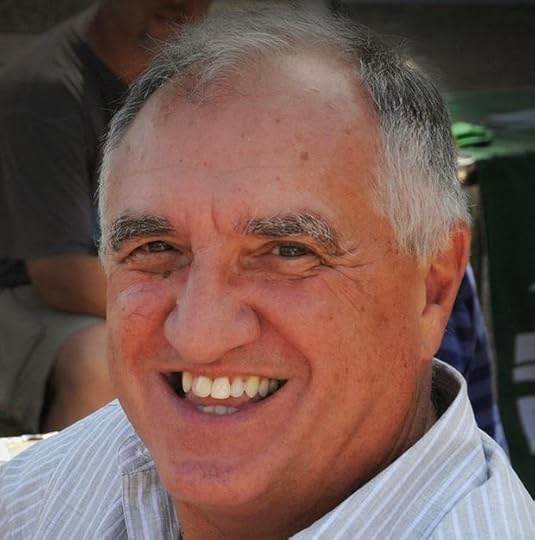 George Anastasia, author of Gotti's Rules
George Anastasia, author of Gotti's RulesThe Story Behind Gotti’s Rules - Jersey Man: George Anastasia got a telephone call from John Alite nearly two years ago, setting in motion the writing of the book Gotti's Rules: The Story of John Alite, Junior Gotti, and the Demise of the American Mafia.
At the time, Anastasia knew some of Alite's background, including that he was a Queens-based associate of the Gambino crime family, first under John J. Gotti and then under John A. “Junior” Gotti. Also, Anastasia knew that "he had a reputation for violence that was off the charts. And he had ultimately cut a deal with the government and became a cooperating witness."
In an article on the Jersey Man website, Anastasia tells the story of the writing of the book.
... in the mid to late 1990s [Alite] had spent considerable time in South Jersey and Philadelphia, establishing a beachhead in the underworld there. Then he had gone on the run, traveling in and out of more than a dozen countries before settling in Brazil. At first it was Goodfellas meets “The Girl from Ipanema.” Then it soured. What followed were two years in hellish Brazilian prisons, extradition to the U.S. to face racketeering-murder charges and finally the decision to cooperate and testify for the government.
But there was more. Much more. Enough, in fact, to fill more than 300 pages in Gotti’s Rules: The Story of John Alite, Junior Gotti and the Demise of the American Mafia. The book came out last month from Dey Street Books, an imprint of HarperCollins.
It’s been an interesting experience.
 Click here to purchase on Amazon
Click here to purchase on AmazonGotti Jr. is not a big fan. In fact, he rushed a self-published book to the Internet in an attempt to undermine the book I did about Alite. There’s a backstory there that paints the publishing business as nearly as treacherous and cutthroat as the underworld where Alite and Gotti Jr. once flourished, but that’s a story for another day.
Alite came to me with a typed manuscript of more than 300 pages that he and another inmate had put together while they were cellmates in a federal prison. The stories were great. The writing not so good. I used the manuscript as a guide for the next year. During that time, Alite and I met dozens of times at the Marlton Diner on Route 70. Over breakfast or coffee we talked about his life, about the story he wanted to tell and about why he wanted it told. As the project progressed, I would show him sample chapters.
I’ve gotten to know a lot of wiseguys over the years. John Alite is one of the most interesting and, other than Ron Previte, probably the one for whom I have the most empathy. He’d be the first to admit that he was a bad guy and that many of the things he did were despicable. He never tried to hide any of that or to explain it away. That’s one of the things he and Previte had in common. Neither tried to sugarcoat what they had done. ...
READ THE COMPLETE STORY
Published on February 26, 2015 10:18
February 25, 2015
"Now I Have a Target," Junior Gotti Says
This preview video, from John A. "Junior" Gotti's website, seems to refer to the 302 "proffer memo" released in George Anastasia's Gotti's Rules: The Story of John Alite, Junior Gotti, and the Demise of the American Mafia (now available in the UK) as well as charges made by Gotti and his attorney previously regarding an FBI agent.
There's an ambiguity as to precisely what Gotti refers to, though based on references to "the book," it seems he's discussing the 302 in reference to a larger effort to discover who was behind an alleged "Get Gotti" campaign.
This is the second preview video. In the first video Junior discussed his reasons for writing his book, Shadow of My Father.
As we noted previously, Gotti and attorney Charles Carnesi have claimed that Junior's fourth RICO trial was the result of an overzealous law enforcement official with an agenda. He was either out to get Junior for personal reasons or was seeking to capitalize on the publicity of the Gotti name.
Part of the charges included a newspaper reporter. Carnesi previously said, "Some agent intimately involved in the case must have had a relationship with a New York Post reporter... she starts writing a series of articles with revelations she alleges are coming from a law enforcement source."
[The excerpts to Gotti's book.]
“So we go into court and we challenge Kati Cornell Smith to disclose the source of the leaks, believing that they came from Ted Otto. She invokes the New York Shield Law which protects reporters’ sources. But when asked if she does have a ‘law enforcement source,’ she affirms under oath that her story is truthful in that regard."
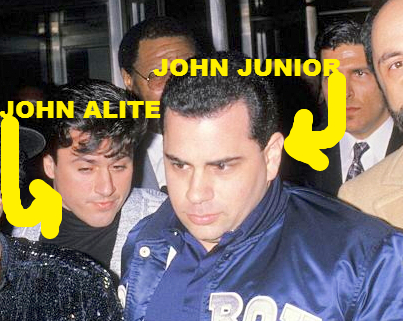 There's an Alite in this picture, but not in this story, Gotti said...
There's an Alite in this picture, but not in this story, Gotti said...Gesturing at a number of pages tacked to a cork-board behind and above him, Gotti said, "These are all our letters and filings that we've done since 2006 asking various individuals from the US Attorney to the Attorney General that there is wrongdoing going on in our case, mainly by a case agent. That there's wrongdoing going on here. I've been demanding a hearing since 2006. I never ran away from this. But I wanted a hearing about it. How it got there, to the press, the content, everything, the whole kit and caboodle."
As for whether John Alite is involved in this, Gotti said, "No there's no Alite, that's now. Now, we have a target."
He added, "Back then, as you know there is a shield law... [meaning] "Well someone whispered in my ear and I don't know how it got there." [unintelligible]
"Now, thanks to this guy, who is really not very bright, he's proud as a peacock. This gets leaked by an agent, we believe we know who. He's got his name on the bottom and he gives it to the book and says "Yeah, it's me, it's me, it's me." Well, now I have a target. Now he just gave me a target. Because now it starts with him and now I get to the bottom of all my troubles since 2006, I can get to the bottom of it right now."
What's confusing is the name "on the bottom" is not a he, it's a she.Cindy A. Peil, FBI special agent, so we're not certain if there are additional documents Gotti is referring to.
Published on February 25, 2015 13:06
February 23, 2015
George Anastasia Signs "Gotti's Rules" for Public
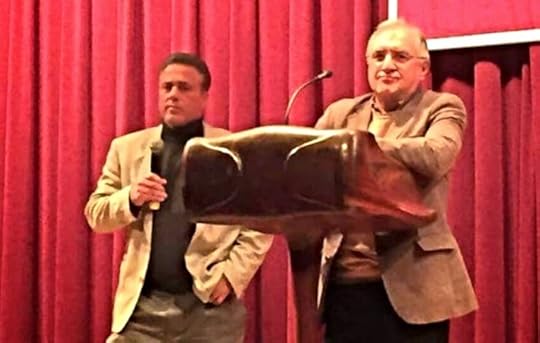 John Alite, left, George Anastasia at Free Library event last night.
John Alite, left, George Anastasia at Free Library event last night.PhillyVoice: "George Anastasia, nationally renowned crime reporter, author and Philadelphia Inquirer writer, will make an appearance at the Free Library on Tuesday, Feb. 24. He will be reading from his new book, "Gotti's Rules: The Story of John Alite, Junior Gotti, and the Demise of the American Mafia."
"Gotti's Rules," which was released last month by Harper Collins, goes behind the scenes of New York City's Gambino crime family from the point of view of the man who betrayed them, John Alite. Alite was a hit-man who later testified against close friend Junior Gotti.
"In his book, Anastasia uses FBI documentation and interviews to construct the story of John A. Gotti's rise to notoriety and how Junior later filled his big shoes.
"Anastasia has spent decades reporting on the Philadelphia mob. He's written books about the Scarfo organization, Tommy DelGiorno and the South Philly mafia and corrupt cop and gangster Rob Previte, among others."
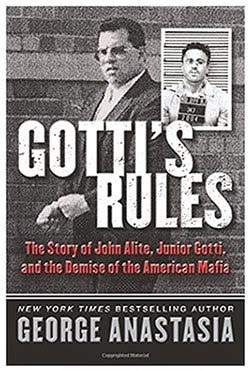 To purchase on Amazon click here.
To purchase on Amazon click here.Anastasia also was the subject of a profile today. "George Anastasia had covered the Philadelphia Mafia for more than a decade when he received a call from a hitman ordered to kill him several years earlier.
Former mob boss John Stanfa allegedly commanded Sergio Battaglia to murder Anastasia in the early 1990s by throwing hand grenades through the windows of his home.
Anastasia learned of the plot — which was never attempted — in 1996, when Battaglia was serving as an informant for the FBI.
“He called me from prison and told me the story,” Anastasia said. “He said to me, ‘It was nothing personal.’ I said, ‘Sergio, I have a wife and two kids. If a hand grenade comes through the window, it’s very personal.’”
Anastasia insisted it is the only time he has feared for his security during a decades-long career covering organized crime. A writer for bigtrial.net and a former reporter for The Philadelphia Inquirer, Anastasia has penned six books on the Mafia and served as a consultant for television productions about the mob.
His latest book, “Gotti’s Rules: The Story of John Alite, Junior Gotti and the demise of the American Mafia” hit stores last month. He will discuss the book Tuesday night at an event hosted by the Free Library of Philadelphia.
Anastasia spoke with PhillyVoice last week, detailing the book, his career and the state of the Philadelphia Mafia. The book offered Anastasia an opportunity to tell the story of the mob through the lens of Alite, an enforcer for the Gambino crime family in New York.
“I was trying to deconstruct the myths of the mafia and deconstruct the myths of the Gotti family,” Anastasia said. “The whole idea that this is about honor and loyalty is pretty much nonsense. It’s pretty much about treachery and deceit.”
The actual Mafia, Anastasia said, is far from the romanticized version depicted inThe Godfather and The Sopranos. If anything, it resembles the grittiness displayed in Goodfellas.
“It’s not about Don Corleone, man of honor, ‘let me take care of my family,’” Anastasia said. “It’s more about, ‘give me the money and if you don’t give me the money, I’m going to break your knee.’”
Or worse.
Alite pleaded guilty to two murders, four murder conspiracies and at least eight shootings in 2008. He also acknowledged his participation in multiple armed home invasions and robberies.
Alite, who pitched his story to Anastasia, agreed to testify against Charles Carneglia, another Gambino family enforcer convicted of four murders. He later testified against John A. Gotti, better known as "Junior Gotti" and the son of former Gambini boss John J. Gotti.
Cooperating with authorities has become much more common, Anastasia said. Aided by the Federal Witness Protection Program, mobsters opt to testify against their families. Secrecy and loyalty have withered.
“You never used to see that back in the '50s and '60s,” Anastasia said. “The guy would be dead if he did that.”
Federal prosecutions are just one factor that has left the mob decimated, Anastasia said. Others include sophisticated surveillance, competing underworld groups and the Racketeer Influenced and Corrupt Organizations (RICO) Act.
Plus, Italians no longer face limited opportunities in the professional world. With the brightest Italians chasing careers that bring them riches legally, Anastasia said the mob must scrape from the bottom of the gene pool.
The scene is no different in Philadelphia, Anastasia said. Mobsters began testifying against one another in the late 1980s and early 1990s, breaking apart the Mafia’s influence. Now, no one is certain who is running Philadelphia’s mob.
The Daily News reported last week that a three-headed committee consisting of Steve Mazzone, John “Johnny Chang” Ciancaglini and Philip Narducci might be at the helm. Or it could be Joseph “Uncle Joe” Ligambi, the former boss who returned to South Philly last year after surviving 32 months in federal prison while being tried twice on racketeering charges.
“It’s valid to raise the question of who’s in charge,” Anastasia said. “I think the more important question is, given what’s happened to the Philly mob, why would anybody want to be boss?”...
READ THE COMPLETE STORY
Published on February 23, 2015 18:14
George Anastasia Signs "Gotti's Rules" for Public Tomorrow
 To purchase on Amazon click here.
To purchase on Amazon click here.PhillyVoice: "George Anastasia, nationally renowned crime reporter, author and Philadelphia Inquirer writer, will make an appearance at the Free Library on Tuesday, Feb. 24. He will be reading from his new book, "Gotti's Rules: The Story of John Alite, Junior Gotti, and the Demise of the American Mafia."
"Gotti's Rules," which was released last month by Harper Collins, goes behind the scenes of New York City's Gambino crime family from the point of view of the man who betrayed them, John Alite. Alite was a hit-man who later testified against close friend Junior Gotti.
"In his book, Anastasia uses FBI documentation and interviews to construct the story of John A. Gotti's rise to notoriety and how Junior later filled his big shoes.
"Anastasia has spent decades reporting on the Philadelphia mob. He's written books about the Scarfo organization, Tommy DelGiorno and the South Philly mafia and corrupt cop and gangster Rob Previte, among others."
Anastasia also was the subject of a profile today. "George Anastasia had covered the Philadelphia Mafia for more than a decade when he received a call from a hitman ordered to kill him several years earlier.
Former mob boss John Stanfa allegedly commanded Sergio Battaglia to murder Anastasia in the early 1990s by throwing hand grenades through the windows of his home.
Anastasia learned of the plot — which was never attempted — in 1996, when Battaglia was serving as an informant for the FBI.
“He called me from prison and told me the story,” Anastasia said. “He said to me, ‘It was nothing personal.’ I said, ‘Sergio, I have a wife and two kids. If a hand grenade comes through the window, it’s very personal.’”
Anastasia insisted it is the only time he has feared for his security during a decades-long career covering organized crime. A writer for bigtrial.net and a former reporter for The Philadelphia Inquirer, Anastasia has penned six books on the Mafia and served as a consultant for television productions about the mob.
His latest book, “Gotti’s Rules: The Story of John Alite, Junior Gotti and the demise of the American Mafia” hit stores last month. He will discuss the book Tuesday night at an event hosted by the Free Library of Philadelphia.
Anastasia spoke with PhillyVoice last week, detailing the book, his career and the state of the Philadelphia Mafia. The book offered Anastasia an opportunity to tell the story of the mob through the lens of Alite, an enforcer for the Gambino crime family in New York.
“I was trying to deconstruct the myths of the mafia and deconstruct the myths of the Gotti family,” Anastasia said. “The whole idea that this is about honor and loyalty is pretty much nonsense. It’s pretty much about treachery and deceit.”
The actual Mafia, Anastasia said, is far from the romanticized version depicted inThe Godfather and The Sopranos. If anything, it resembles the grittiness displayed in Goodfellas.
“It’s not about Don Corleone, man of honor, ‘let me take care of my family,’” Anastasia said. “It’s more about, ‘give me the money and if you don’t give me the money, I’m going to break your knee.’”
Or worse.
Alite pleaded guilty to two murders, four murder conspiracies and at least eight shootings in 2008. He also acknowledged his participation in multiple armed home invasions and robberies.
Alite, who pitched his story to Anastasia, agreed to testify against Charles Carneglia, another Gambino family enforcer convicted of four murders. He later testified against John A. Gotti, better known as "Junior Gotti" and the son of former Gambini boss John J. Gotti.
Cooperating with authorities has become much more common, Anastasia said. Aided by the Federal Witness Protection Program, mobsters opt to testify against their families. Secrecy and loyalty have withered.
“You never used to see that back in the '50s and '60s,” Anastasia said. “The guy would be dead if he did that.”
Federal prosecutions are just one factor that has left the mob decimated, Anastasia said. Others include sophisticated surveillance, competing underworld groups and the Racketeer Influenced and Corrupt Organizations (RICO) Act.
Plus, Italians no longer face limited opportunities in the professional world. With the brightest Italians chasing careers that bring them riches legally, Anastasia said the mob must scrape from the bottom of the gene pool.
The scene is no different in Philadelphia, Anastasia said. Mobsters began testifying against one another in the late 1980s and early 1990s, breaking apart the Mafia’s influence. Now, no one is certain who is running Philadelphia’s mob.
The Daily News reported last week that a three-headed committee consisting of Steve Mazzone, John “Johnny Chang” Ciancaglini and Philip Narducci might be at the helm. Or it could be Joseph “Uncle Joe” Ligambi, the former boss who returned to South Philly last year after surviving 32 months in federal prison while being tried twice on racketeering charges.
“It’s valid to raise the question of who’s in charge,” Anastasia said. “I think the more important question is, given what’s happened to the Philly mob, why would anybody want to be boss?”...
READ THE COMPLETE STORY
Published on February 23, 2015 18:14
February 21, 2015
Peter Lance Writes Us About Our Gotti Coverage
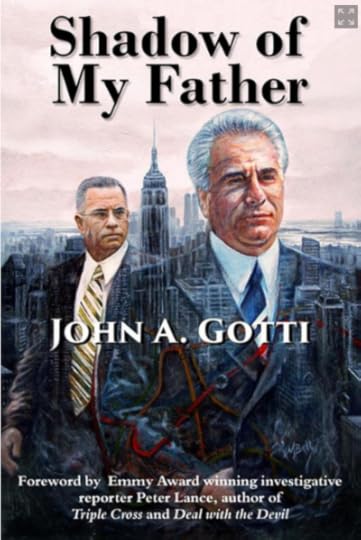 Ebook cover; to purchase on Amazon, click here.
Ebook cover; to purchase on Amazon, click here.We present here an email that Peter Lance sent us privately; we requested his permission to run it.
He sent the email five days ago, we only saw it tonight and are posting it.
It appears to us that it was written to be posted. We don't think he'll have any issues; there is nothing personal in the contents.
Of the very few high-profile figures who have recognized us, he is the first to do so directly and on the record. He gets major props from us for this.
That said we don't agree with Mr. Lance. We have linked to the forward and book, more than once; if you look below at our Blog List, you'll even see our permalink to John A. Gotti's website, which is linking to the forward now and has been for the past seven days.
We make no apologies for anything we've written.
We do want to ask you, reader, to ponder some questions, if you're so inclined....
1.) Why do Lance and Junior Gotti continue to define John Alite through the eyes of a jury? We can understand why Lance does it, but why does Junior need a jury to tell him about John Alite? (The members of the jury supposedly were interviewed after the trial -- they were hung; it was a mistrial. Note that we previously blasted published reports that tried to use two jurors to make it sound like more were calling Alite "discredited." We'd like to know more about the notion that this jury nearly universally blasted John Alite. Where is the information? What questions were asked of them? All the questions. Where is this data? Are we supposed to believe what we are told? We don't believe there is any degree of validity to this convenient construct until we see the data about this post-trial jury interview .... And who really cares what the jurors think? To have served on that jury you'd have to be so far removed from the mob that you certainly would not know this blog existed....)
2.) Why have we made a conscious decision to cover John Alite in the way that we do, when the easier, more popular and potentially healthier route would be to condemn him as a liar? Taking on the storied Gotti name is not popular -- and according to some of our friendly sources from the street, we've been told, yeah, he may be out of the mob, but still, "you don't know what this guy is capable of."
Actually, we do....
And for those of you waiting for something to happen to completely and totally discredit John Alite, let the notion go. He was attacked for years and all his dirty laundry was already aired.
And if a Penthouse article should suddenly come out saying something horrible about Alite, we won't believe it. Yes, we know the trick that one of the crime families pulled once to discredit a witness using a magazine...
3.) Why do Lance and Junior Gotti contradict themselves by continuing to say Alite is such a "discredited" witness, the Feds never again used him, yet they also call him the "government's star cooperator." Is he a discredited witness or a star cooperator? He can't be both....
4.) How is it that we knew how to pronounce John Alite's name back in the 1990s? Could it be that we had a brother-in-law who did some time in prison for racketeering but was terrified before he went in that John Alite was going to kill him? Yes... we have a personal frame of reference with which we approach this topic.
5.) Why won't Junior Gotti give a single interview without a lawyer by his side and why are there always conditions? Yes, we know what you'll say: the feds may continue to harass him. So how do you explain his actions, period?
We have many more questions for you. How is it that Junior has two "crackheads" for friends? He said he was stabbed while trying to stop a fight between two crackheads who were his friends. He was stabbed in the parking lot of a CVS that had no working video surveillance on the night in question.... Which reminds us -- Who stabbed him?
Yes, we have questions.... But on with the program.....
Here is Peter Lance's email. We respect him for having the courtesy to write us and express his opinion.
Of the very few high-profile figures who have recognized us, he is the first to do so directly and on the record. We have to credit him for this and we do. We link to his Greg Scarpa book here.
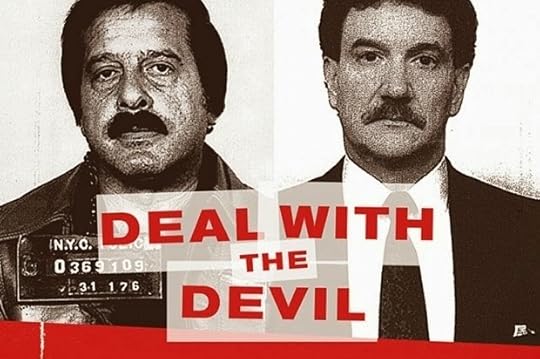 To purchase on Amazon, click here.
To purchase on Amazon, click here.We may not agree with what you say, but we'll defend with our lives your right to say it...
I was happy to see your more balanced coverage of John A. Gotti's new book, following the release of "Gotti's Rules," which has gotten a lot of play, despite the fact that it's based almost entirely on the utterly discredited account of John "Johnny Corvette" Alite, whom the Feds never again used as a witness after he was found so lacking in credibility by the jury in John's 4th trial.
http://abclocal.go.com/story?section=news/local&id=7147461
Afterward, some jurors said they were evenly split throughout their deliberations on all counts. But they were unanimous on one point: The government's star cooperator, admitted mob enforcer and former Gotti friend John Alite, bombed on the witness stand.
I'd be most appreciative if you added to your site this link to the 23 page foreword I wrote for "Shadow."
http://peterlance.com/Shadow_Final_Foreword_1_19_15.pdf
I filed the piece only after extensively researching John "Junior's" multiple federal trials and coming away convinced that it was the Feds who should have been charged under RICO for their misconduct once he'd pled guilty to racketeering, paid millions in fines & restitution and served 77 months ending in 2004.
John approached me in August after having read my fourth book from HarperCollins, "Deal With The Devil," an epic investigation of the Bureau's 30+ year relationship with Greg "The Grim Reaper" Scarpa Sr.
This is a link to the Introduction published on salon.com
http://www.salon.com/2013/06/30/its_not_just_whitey_bulger_meet_another_mafia_killer_aided_for_decades_by_the_fbi/
Published on February 21, 2015 20:51



